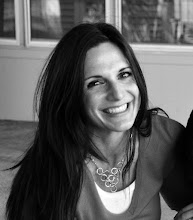Yes, you read that right. Crafty Friday is back! Thanks to our involvement in our homeschool cooperation and my having to teach a class, I am using my kids as test subjects for my art lessons.
There are three parts to this project, and here’s what you will need:
-3 clear glasses half full of water
-red, blue and yellow food coloring
-six containers or paper plates to represent the colors red, blue, yellow, orange, green and purple. We used white paper plates and I stuck a piece of colored paper on each one to indicate each color.
-glue
-pieces of construction paper, material, string, stickers, pom poms, etc. in the six colors aforementioned.
This being the first lesson, I wanted to teach the kids a little bit of color theory. This also being the first day I meet most of these kids, I thought it wise to hold off on painting until I can gage the how easy it will be to handle a room full of 5 and 6 year olds armed with paintbrushes. So, I figured a little demonstration with food coloring will do the trick.
First, fill three clear glasses about half way full of water. Then add drops of food coloring to make one glass with red water, one with blue water, and one with yellow water. Your child is welcome to smell the water like mine did.
Explain to your children that red, yellow and blue are the primary colors. These colors cannot be made by mixing other colors, but by mixing two of the primary colors together, we can make the secondary colors, orange, green, and purple.
Now the fun begins. Add a few drops of food coloring to each glass to mix the secondary colors in these combinations:
yellow + blue = green
red + yellow = orange
blue + red = purple
We mixed yellow into the blue glass to make the green, red into the yellow glass to make orange, and blue into the red glass for our purple; but the purple didn’t turn out so well. I don’t think we added enough blue because the color looked more maroon. Anyhow, here are our results:
The second part of the lesson introduces the kids to the color wheel. A color wheel shows the relationship between colors. Since I’ll be working with a young age group, I’m only demonstrating the primary and secondary colors, but if you’d like to add tertiary colors to the mix, feel free. You can find out more about tertiary colors and color theory here.
First, set up six plates in a circle, each plate representing a different color. Arrange the plates like so: Start with red at the top. Then, going clockwise set up orange, yellow, green at the bottom, then blue and finally purple, between the red and blue. Then have your kids find different objects around the house of each color and place them in the color wheel until it’s filled.
Finally, the kids will make their own color wheel by gluing scraps of paper, material, bits of string and stickers to represent the spectrum of colors. I created a color coded wheel for the project:
And here’s what Finn created:
Happy Crafting!
nessa dee













1 comment:
Good lesson!! And I love your worksheet-- it's basic enough for pre-schoolers, and it makes a neat- looking finished project-- worthy of any refridgerator door!
Post a Comment